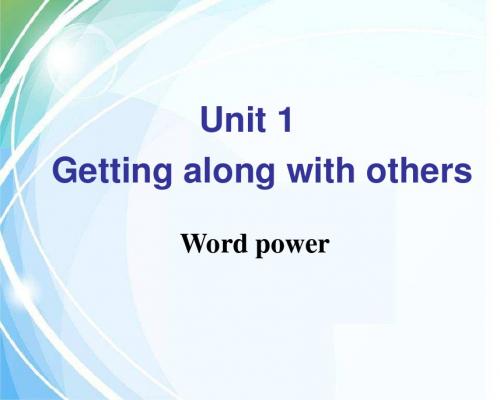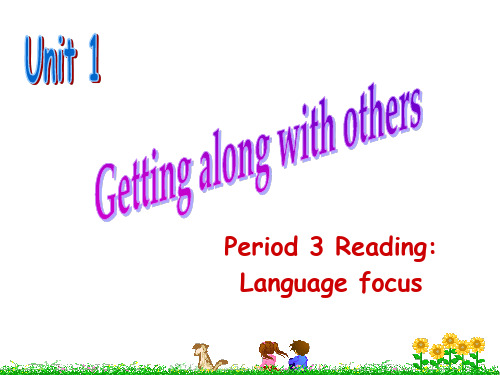最新译林牛津版高二英语必修五unit1 知识点及语法总结资料
- 格式:doc
- 大小:112.00 KB
- 文档页数:15






JOHH SHOW DEFEATS “KING CHOLERA”John Snow was a famous doctor in London - so expert, indeed, that he attend ed Queen Victoria as her personal physician. 【so...that引导结果状从】【when引导时间状从;exposed(done)作后定】This was the deadly disease of its day.Neither its cause nor its cure was understood. 【neither...nor的用法;被动语态】So many thousands of terrified people died every time there was an outbreak. 【every time引导时间状从,中间带有一个there be句型】John Snow wanted to face the challenge and solve this problem.He knew that cholera would never be controlled until its cause was found.【that引导的宾从中套一个until引导的时间状从;情态动词的被动语态】He became interested in two theories that possibly explained how cholera killed people.【be/become interested in...;that引导的定从中套一个how引导的宾从】The first suggested that cholera multiplied in the air.【that引导宾从】A cloud of dangerous gas floated around until it found its victims. 【until引导时间状从】The second suggested that people absorb ed this disease into their bodies with their meals.【that引导宾从】From the stomach the disease quickly attacked the body and soon the affected person died.John Snow suspected that the second theory was correct but he needed evidence.【that引导宾从】So when another outbreak hit London in 1854, he was ready to begin his enquiry.【when引导时间状从】As the disease spread quickly through poor neighbourhoods, he began to gather information.【as引导时间状从】In two particular streets, the cholera outbreak was so severe that more than 500 people died in ten days.【so...that引导结果状从】He was determined to find out why.【被动语态】First he marked on a map the exact places where all the dead people had lived.【where引导定从】This gave him a valuable clue about the cause of the disease.Many of the deaths were near the water pump in Broad Street (especially numbers 16, 37, 38 and 40).He also noticed that some houses (such as 20 and 21 Broad Street and 8 and 9 Cambridge Street) had had no deaths.【that引导宾从;had done过去完成时】He had not foreseen this, so he made further investigations.He discovered that these people worked in the pub at 7 Cambridge Street.【that引导宾从】They had been given free beer and so had not drunk the water from the pump.【过去完成时的被动;so和had间省略主语they】It seemed that the water was to blame.【that引导表从】Next, John Snow looked into the source of the water for these two streets.【that引导宾从;polluted作后定(高考中出现过)】He immediately told the astonished people in Broad Street to remove the handle from the pump so that it could not be used.【so that引导目的状从(是为了);情态动词的被动】Soon afterwards the disease slowed down.He had shown that cholera was spread by germs and not in a cloud of gas.【that引导宾从;被动语态】In another part of London, he found supporting evidence from two other deaths that were linked to the Broad Street outbreak.【that引导定从】A woman, who had moved away from Broad Street, liked the water from the pump so much that she had it delivered to her house every day.【who引导非限制定从;so...that引导结果状从】Both she and her daughter died of cholera after drinking the water.With this extra evidence John Snow was able to announce with certainty that polluted water carried the virus.【that引导宾从(没有直接跟在谓语动词之后)】To prevent this from happening again, John Snow suggested that the source of all the water supplies be examined.【that引导宾从】The water companies were instruct ed not to expose people to polluted water any more.Finally "King Cholera" was defeated.定向练习,举一反三一、单词和短语1.The medicine will cure you ______ your cough.2.The doctor devoted himself to finding the cure ______ the disease.3.Most shin cancers are _______ (cure) if _______ (treat) early.4.Many patients are not getting the medical ________ (treat) they need.5.She likes her job to be ______ challenge.6.The new discovery ________ (challenge) traditional beliefs in 1850.7.Reducing the gap between rich and poor is one of the _________ (challenge) the government faces.8.Try tennis, badminton or boring. In short, try anything _________ (challenge).pletely ________ (absorb) in her new novel, the young writer kept thinking and writing in her study for a dozen hours.10.His ability _______ (absorb) information was astonishing, but his concentration time was short.11.Those small companies have been absorbed ______ the large company.12.When something did interest me, I could become ______ (absorb).13.He left office after _________ (suspect) of theft.*14.They suspected him ______ giving false evidence.15.He is the first _________ (suspect) of giving away government secrets to the enemy.*16.She blamed him ______ the failure of their marriage.17.If you fail the exam, you will only have yourself ________ (blame).18.Which driver was _______ (blame) for the accident?19.They put the blame for the abortion of the project ______ us.20._______ (blame) for the broken vase, the boy hung his head.21.There’s _____ direct link between diet and heart disease.22.The police suspect that the two cases may _______ (link).23.The Channel Tunnel _______ (link) Britain with the European contient.24.They walked with their arms ______ (link).25.Always read the _________ (instruct) on the bottle thoroughly and take the right amount ofmedicine.26.He is the ________ (instruct) who taught me how to shi.st week, we _________ (instruct) by our clients that you owe them 300 dollars.28.He instructs us ______ making self-introduction.29.She arrived at 10 o’clock as _______ (instruct).30.All the evidence suggests that he _______ (steal) the money.31.Earlier reports suggested that a meeting _________ (take) place next Sunday.32.I suggest that you _______ (thought) over your position very carefully.33.I suggest _______ (add) vitamins E and A to your diet.34.He suggested that we _______ (hold) a meeting to discuss this problem.35.He suggested _______ (hold) a meeting to discuss this problem.36.The doctor advised my father _______ (give) up smoking.37.The volunteers contribute most of their own spare time ______ the project.38.The young population of a nation are the people ________ (contribute) most to a country’s economic development.39.Her ________ (contribute) to the reaserch were largely unacknowledged.二、语法专项1.后置定语(1)The adobe dwellings(土坯房) ______ (build) by the Pueblo Indians are admired by even the most modern architects. (2015年全国卷)(2)The airport _______ (complete) last year has helped promote tourism in this area.(3)There are hundreds of vistor _______ (wait) in front of the Art Gallery.COPERNICUS’ REVOLUTIONRRY THEORYNicolaus Copernicus was frightened and his mind was confused.Although he had tried to ignore them, all his mathematical calculations led to the same conclusion that the earth was not the centre of the solar system.【although引导让步状从;that引导同位从】Only if you put the sun there did the movements of the other planets in the sky make sense.【if引导条件状从;only放句首时,句子要用部分倒装(波浪线部分为主句谓语动词,did助动词置于主句主语之前)】【as引导原因状从;would have done虚拟语气】They believed God had made the world and for that reason the earth was special and must be the centre of the solar system.【省略that的宾从;for‘由于...’】The problem arose because astronomers had noticed that some planets in the sky seemed to stop, move backward and then go forward in a loop.【because引导原因状从;that引导宾从】Others appeared brighter at times and less bright at others.This was very strange if the earth was the centre of the solar system and all planets went round it.【if引导条件状从】Copernicus had thought long and hard about these problems and tried to find an answer.He had collected observations of the stars and used all his mathematical knowledge to explain them.But only his new theory could do that.So between 1510 and 1514 he worked on it, gradually improving his theory until he felt it was complete.【until引导时间状从】In 1514 he showed it privately to his friends.The changes he made to the old theory were revolutionary.【省略that/which的定从】He placed a fixed sun at the centre of the solar system with the planets going round it and only the moon still going round the earth.He also suggested that the earth was spinning as it went round the sun and this explained changes in the movement of the planets and in the brightness of the stars.【that引导宾从;as引导时间状从】His friends were enthusiastic and encouraged him to publish his ideas, but Copernicus was cautious.He did not want to be attacked by the Christian Church, so he only published it as he lay dying in 1543.【as引导时间状从】Certainly he was right to be careful. The Christian Church rejected his theory, saying it was against God's idea and people who supported it would be attacked.【who引导定从】Yet Copernicus' theory is now the basis on which all our ideas of the universe are built.【on which 引导定从】His theory replaced the Christian idea of gravity, which said things fell to earth because God created the earth as the centre of the universe.【which引导非限制定从中套一个because引导的原因状从】Copernicus showed this was obviously wrong.Now people can see that there is a direct link between his theory and the work of Isaac Newton, Albert Einstein and Stephen Hawking.【that引导宾从】。
精品文档 精品文档 译林牛津版高二英语必修五unit1 知识点及语法总结 Welcome to the unit &Reading I. 重点单词 1. betray. vt. 1) 出卖;背叛 He would rather die than betray his country to the enemy. 2) 显露;泄露 The expression on her face betrays her anger. 2. pretend. vt/vi 1)vt. 假装,佯装, 后接不定式和从句做宾语。 She pretended to be reading. 她假装在看书。 2)vi. 假装 She wasn’t really crying, she was only pretending. 3. admit. vt 1) 承认;供认 admit doing sth. 承认做某事 admit to sb. 向某人承认 He admitted his crime. 2) 许可进入,准许进入 admit sb. to/into--- 接纳某人进入...; 吸收某人参加... He is admitted to Nanjing University this year. 3) 容纳, 容许 The cinema admits about 2000 people. 4) admit of 容许有; 有...可能; 容有...的余地 His illness admits of no delay. 4. swear. vt/vi 发誓;郑重承诺;咒骂 swear to sb. / swear that 从句 向某人承诺发誓 swear—swore ---sworn 5. focus. n/vt/vi 1) n. 焦点,注意力 put focus on 集中注意力于….. 2) vi/vt focus on集中注意力于…. 近义词组: concentrate on pay full attention to devote … to 6. guilty. adj 有罪的 1) be guilty of “犯了……罪” In the process of gaining our rightful place, we must not be guilty of wrongful deeds. 2)be found guilty 被判决有罪 精品文档 精品文档 Maggie could be sentenced to up to three years in prision if (he was) found guilty. 7. remark. Vt / n 评论 make remarks on sth = make comments on sth 对…作出评论 8. apologize. vi 道歉 apologize to sb=make an apology to sb 向某人道歉 9. sensitive. adj 敏感的;体贴的 be sensitive to 对…体贴,敏感 10. blame. n/vt 责备 1) n. put blame on sb 责备某人 2) vt. blame sb for sth 因某事责备某人 blame sth on sb 把某事归咎于某人 He blamed his faiure on his teacher. sb be to blame= sb should be blamed 主动形式表被动 You are to blame. 你应该受责备。 11. gifted. adj = talented 有天赋的 1) be gifted for/as 有…天赋 2) have a gift for有…天赋
II. 重点词组 1. beg sb to do sth 恳求某人做某事 2. stare at 凝视 glare at 怒视 gaze at 瞪眼看 3. keep one’s word 守诺言 break one’s word 食言 have a word with 与…交谈 have a words with 与…吵架 4. feel like doing 想要做某事 sound like 听起来像 5. go straight to 径直去… 6. spy on 监视 watch over 看管 7. keep pace with 与…协调一致 keep up with 跟上 8. as a result of 由于 because of= due to=owing to 由于 精品文档 精品文档 as a result 结果 result in 导致 result from 源于,由于 9. turn into 转变成 turn up 出现,出席 turn out 结果是 turn sb down 拒绝 turn around 转身;逆转 turn to 转向 10. as well as 和 as well 也 may as well 不如不妨 11. shout at 朝…大喊( 生气,愤怒) shout to朝…大喊(指远处) 12. make some cruel remarks 咒骂某人,说坏话 13. even though 即使 14. can not help doing sth 禁不住做某事 can’t help but do sth 只好做某事 can’t help to do sth 不能帮助做某事 15. accuse sb of sth 指控某人某事 inform.. of… 告知 approve… of 同意 warn… of… 警告
III.重点句式 1. I must have sounded very proud of myself after the quiz, saying how easy it was and how I was sure to get a good mark. (page 2)
(1)“must+完成时”表示对过去事情语气比较肯定的推测。对现在推测,用must be. They must have been laughing behind my back. (page 2) 他们在我背后一定是笑得合不拢嘴。 ① “must+完成时”结构的反义疑问句,疑问部分应根据must后的动词形式采用相应的形式,可用have (has),也可用did。但若句中出现了过去时间状语,则只能用did。 He must have read it, hasn’t /didn’t he? 他一定读过它,是吗? He must have left yesterday, didn’t he? 他昨天一定走了,是吗? ② 表示推测的否定结构要用“can not /can’t”, 或者是can +其他具有否定意义的副词。例如: You can’t be tired — you’ve only been working for an hour. 你不可能疲倦,你只工作了一小时。 精品文档 精品文档 (2)….., saying how easy it was and how I was sure to get a good mark 是非谓语动词doing做原因状语;how easy it was and how I was sure to get a good mark 是how 引导的名词性从句做say的宾语。
2. I thought that Hannah must have told everyone about my grades after promising me not to.(page 2)
1) must have told 表示对过去推测; 2)after promising me not to=after she promised not to tell anyone. a. after引导的状语从句,当从句的主语she与主句的主语Hannah 一致时,从句的she 可以省略,同时从句的谓语动词promised 要变成非谓语形式promising; b. promising me not to 属于 to do 不定式省略动词do 的情况,在某些动词后,如:promise, like, hope, want 等,为避免与上一句to do中的动词重复,可省略to后的动词。 3. I cannot help wondering if he wants Peter to be his best friend instead of me. (page 3) 1)if he wants Peter to be his best friend instead of me为wonder 的宾语从句 2)wonder vt. (对)...感到奇怪; 想知道,不知道 ① I wonder if/whether you… 可用来客气地提出请求;wonder后可接其他连接词引导的宾语从句。例如: I wonder if you’d give me some advice. I wonder who he is, where he came from and why he came. ② wonder后可接“疑问词+动词不定式”作宾语:例如: They waited and wondered what to do. ③ there is no wonder that 从句 : 难怪……. There is no wonder that you were late for school, for your bike broke down. 4. He accuse me of some bad things just to hurt me. (page 3) 1) accuse sb of sth= charge sb with sth 指控某人…. 2)just to hurt me属于非谓语to do形式,在句中做目的状语,类似的词组还有:only to (表示出乎意料的结果),in order to/ so as to (表示目的)
5. If so, the problem lies with you, not her.(page 5) (1) If so是个条件从句,so代替上文内容。not也有同样用法,构成省略句式:if not。又如: —She may not be free today. 她今天可能没空。 —If so, we’ll have to put the meeting off. 如果是这样,这会就得延后了。 Get up early tomorrow, if not (you don’t get up early), you will miss the first bus. 明天你得早起,否则(你不早起),你会错过首班车。 (2)lie with“是……的责任;取决于”。例如: The solution to the problem lies with you. 解决该问题的办法落在你的肩上。